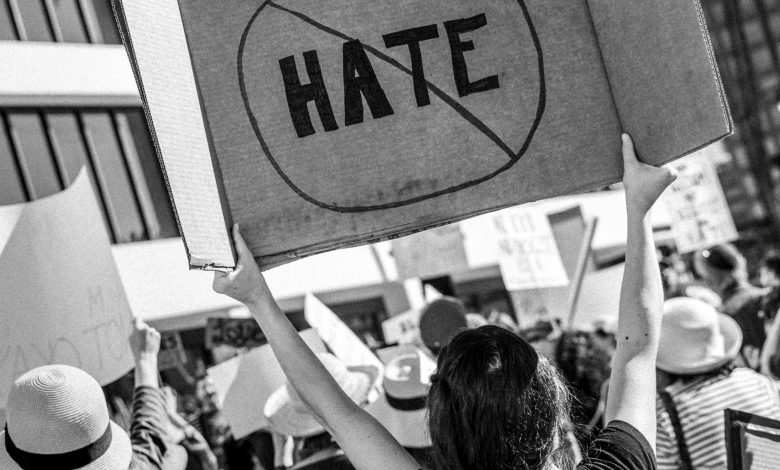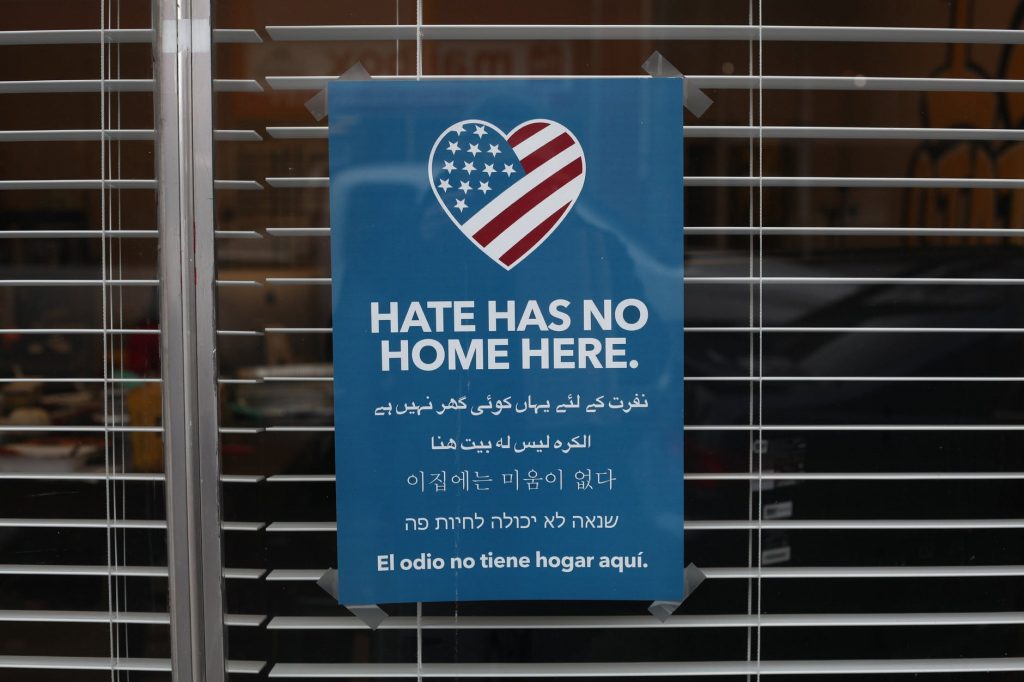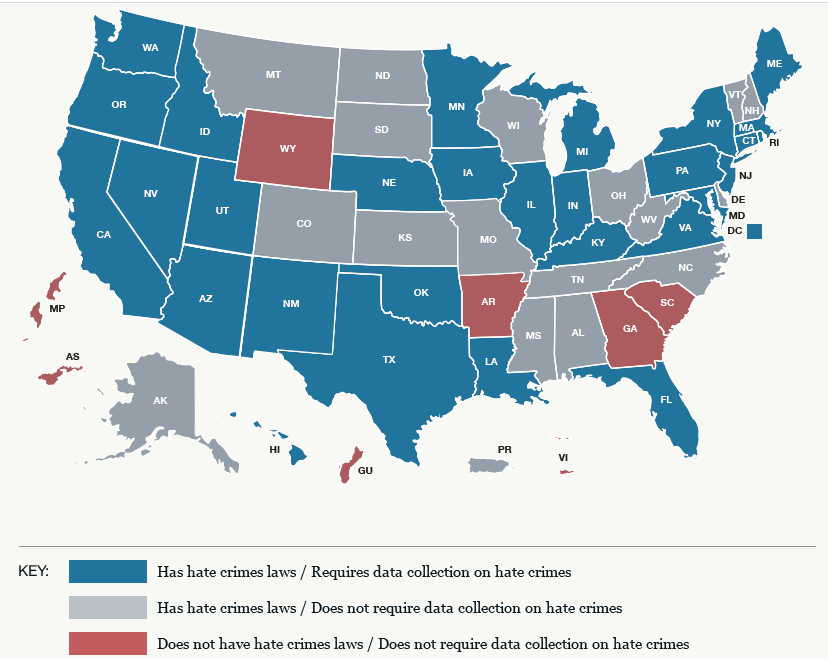What Are Hate Crimes?

A hate crime can be pretty much any type of crime against someone, as long as it has one element: the perpetrator committed the crime because of a bias they hold against someone’s race, sex, religion, gender identity, disability, or nationality. Hate crimes receive harsher convictions and punishments because their harm perpetrates through entire communities, races, religions, families, and more, leaving countless victims. It is known to have a particularly large difference between hate crimes that occur and hate crimes that are reported, referred to as the Hate Crimes Reporting Gap. There is a difference between a hate crime and a bias or hate incident however, as an incident doesn’t involve a crime, threats, violence, or any damage, which means it isn’t a criminal offense. While there are discriminatory laws for certain circumstances, these are usually going to be civil offenses.
What Are Hate Crimes?
A hate crime kind of speaks for itself – it’s a crime that is committed because of someone’s negative opinion about the victim. Legal terms would say that it’s a crime, typically vandalism or violent crimes, that is motivated by a bias towards someone’s race, color, religion, national origin, sexual orientation, gender, gender identity, or disability. The crime doesn’t just have to be against a single person; it can be turned against a whole group, business, or society of a whole. While the top three hate crimes, according to the FBI, are vandalism, intimidation, and assault, the following crimes are often classified as hate crimes when they are bias motivated:
- Murder and non-negligent manslaughter
- Rape
- Aggravated assault
- Simple assault
- Intimidation
- Human trafficking – commercial sex acts
- Human trafficking – involuntary servitude
- Robbery
- Burglary
- Larceny-theft
- Motor vehicle theft
- Arson
- Destruction/damage/vandalism
- Kidnapping
- Fondling
- Sex offenses – nonforcible
- Bribery
- Counterfeiting/forgery
- Embezzlement
- Extortion/blackmail
- Fraud offenses
- Larceny-theft offenses
- Stolen property offenses
As far as which biases motivate hate crimes the most, the FBI also provides these statistics for 2018:
- Race, ethnicity, or ancestry- 59.6 percent
- Religion- 18.7 percent .
- Sexual orientation- 16.7
- Gender identity- 2.2 percent
- Disability- 2.1 percent
- Gender bias- 0.7 percent
The top three targeted racial biases were African Americans, Whites, and Hispanics. Persecuted religious groups were 60 percent Jewish and 15 percent Muslim. Whereas, offenders are 54 percent white and 24 percent black.

First Amendment Rights
In cases of hate crimes, some will ask the question: What about my First Amendment Rights? While it’s true that the First Amendment grants the right to express one’s opinion – even if it’s a hurtful stereotype based on untrue facts, it does not protect the right to commit a crime in motivation of those beliefs. It also does not allow the threat of committing a violent crime, so not all speech is truly free. It’s legal to discuss intolerances of others, even when it is offensive, so long as there aren’t any threats of harming others. Once a threat is made or a crime committed, it becomes a criminal conviction, and usually a felony.
However, it is important to note that this expression of free speech could be used in cases as a way to establish that the crime was committed as a result of the defendant’s obvious bias towards the victim’s race, sexual orientation, religion, disability, nationality, or gender identity. In today’s world of technology, even things like Tweets and text messages from the perpetrator can be used as evidence of a long-standing bias.
Hate Crime Laws
The first law involving hate crimes was passed by President Lyndon Johnson in 1968, which criminalized the act of threatening to or using force on anyone because of their race, color, religion, or national origin while they were doing or helping someone else do some type of federal activity – like while attending public education, their job, jury service, traveling, or other public resources (Violent Interference with Federally Protected Rights, 18 U.S.C. § 245). This year, they also criminalized using any of this to interfere with someone’s housing situation, with the Criminal Interference with Right to Fair Housing Act, 42 U.S.C. § 3631. Disability and familial status were then added to the law 22 years later.
Hate crimes are now governed by 18 U.S. Code §?249, which covers “offenses involving actual or perceived race, color, religion, national origin, gender, sexual orientation,… gender identity, or disability,” charging:
Whoever, whether or not acting under color of law, willfully causes bodily injury to any person or, through the use of fire, a firearm, a dangerous weapon, or an explosive or incendiary device, attempts to cause bodily injury to any person, because of the actual or perceived race, color, religion, or national origin of any person.
This is along with charging any type of bias motivated crime covered by the list above.
Generally, the law sentences a hate crime to come with a fine or up to ten years in prison, or both. However, much more serious are hate crimes that result in death or if they include kidnapping, aggravated sexual abuse, or an attempt on any of these – this sentence is up to life in prison and a fine, or even the death penalty.
It provides a statute of limitations of seven years on offenses that don’t result in a death, but not on those that do.
It is often referred to as the Matthew Shepard and James Byrd, Jr. Hate Crimes Prevention Act of 2009 – under President Obama’s administration – after the results of an infamous case involving these two victims expanded the law to include gender, gender identity, and sexual orientation. This act also provided prosecutors and law enforcement with more resources to pursue these crimes, putting more power in the hands of the federal government to help out on more local levels. This is when it’s taken over by the Civil Rights Division, which requires a written notice from the Attorney General that the state doesn’t have jurisdiction, they asked the government to take control, the state conviction didn’t hold up to federal standards, or it’s in the benefit of the general public to pursue justice through the government.
The other law pertaining to hate crimes is the Damage to Religious Property, Church Arson Prevention Act, 18 U.S.C. § 247, which makes it illegal to interfere by force, or threat of force, with anyone’s right to practice their freedom of religion. Specifically, it criminalizes destroying, defacing, or otherwise damaging any religious property, or because of their race or other biased reasons.
As usual, these laws will vary on a state level, but the Department of Justice (DOJ) shows which states have laws governing the prosecution and/or gathering of data on hate crimes.

FBI Efforts
While the FBI has been involved in hate crimes since World War I, the passage of the Matthew Shepard and James Byrd, Jr., Hate Crimes Prevention Act allowed them to play a much larger part in the prosecution and prevention of hate crimes. Run by the Civil Rights program, this federal bureau has extensive resources, training, and investigative skills to pursue hate crimes to the furthest degree. In particular, they work on five major steps of the process.
Firstly, they provide support to the public in order to ensure hate crimes are identified when they occur, and to help local groups and law enforcement tackle any issues they may be experiencing. When cases are identified, the FBI takes the lead on investigating when it involves a federal crime, working with the local law enforcement to ensure these are pursued sufficiently. Additionally, they are there to assist law enforcement even when the charges are on a state level. They are also able to send cases to local U.S. Attorneys Offices and the Civil Rights Division at the Department of Justice in order to see if a federal conviction should be pursued, sometimes insisting on pressing charges when states won’t or can’t. In order to ensure communities have all of the resources they need to protect the civil rights of all citizens, the FBI also does training programs for law enforcement, groups of minorities, religious organizations, and other organizations in the community to “promote cooperation and reduce civil crime rights abuses.”

Important Hate Crime Cases
Obviously the most influential cases were those of Matthew Shepard and James Byrd, Jr., as they brought to forth the most recent and all-covering law regarding hate crimes. James Byrd, Jr,’s case began setting a precedent all the way back in 1998. James Byrd Jr., a black, 50-year-old Texan, was picked up by a friend and two individuals – John William King and Lawrence Russell Brewer – while he was walking home late one night. Instead of giving him a ride home, King and Brewer beat him and dragged him for three miles cuffed to their truck, leaving his body at a nearby African-American church. Brewer and King were known to be white supremacists, so this was proven to be perpetrated because of their bias against African Americans. The driver was sentenced to life imprisonment, and King and Brewer were both charged with the death penalty, executed in Huntsville, TX in 2019 and 2011, respectively. His murder brought forth the James Byrd, Jr. Hate Crimes Act in Texas before it was enacted with Shepard’s name in the federal act.
Within a year of this, Matthew Shepard also become a victim of a hate crime, but because of his sexuality. He was a gay college student that was kidnapped at gunpoint, beaten, and left tied up to die in the freezing cold overnight. He passed away in the hospital five days later. When they approached Shepard to lure him in, they pretended to be gay, preying on his sexual orientation and establishing the terms of a hate crime. Aaron McKinney and Russell Henderson both were arrested for aggravated robbery, kidnapping, and attempted murder, but once Shepard passed, their charges were increased to first degree murder. Henderson pleaded guilty and was sentenced to two life sentences. McKinney, however, went to trial and was found guilty of felony murder, as it took place during the committing of a felony, and he was also sentenced to two consecutive life terms. This began the outrage and call for new legislation that was accompanied by James Byrd Jr.’s case.
The first case to use the newly passed act was United States v Paul Beebe, Jesse Sanford, and William Hatch. It involved a particularly heinous case of three men in their late twenties from Albuquerque who kidnapped, branded, and further assaulted a young, disabled Navajo man. Beebe’s apartment contained Nazi paraphernalia, and their assault involved swastikas and other obviously racially motivated acts, establishing the bias motivation in the crime. Beebe and Sanford pleaded guilty of federal hate crime charges, while Hatch pleaded guilty to conspiracy to commit a federal hate crime in the Albuquerque court, but when it was brought to the Supreme Court, Beebe pleaded to a violation of the Shepard-Byrd Act, and Sanford pleaded guilty to conspiracy. Hatch was sentenced to 18 years in prison, which was held when brought to the federal level. Beebe and Shepard got considerably worse sentences here, with Beebe serving 102 months and Sanford 60 months.
United States v Frankie Maybee was the first to be brought before the federal court of appeals. Maybee was initially found guilty of five counts of violating this section, as well as a conspiracy to commit a federal hate crime conviction, for seriously injuring a car with five young Hispanics by chasing and hitting them repeatedly with his truck, all while yelling racial slurs. The defense argued that the evidence the prosecution presented was not sufficient enough for the charge, as well as that Congress did not have the power to give a conviction for the Shepard-Byrd Act. However, the appeal court held the original conviction to be lawful and accurate. Maybee was sentenced to 135 months in prison.
The most recent federal hate crime case shows how technology has grown to be a great part of hate crimes, whether for the crime itself, or as evidence of the crime. In Texas, on December 13, 2019, two young men named Daryl Henry and Pablo Ceniceros-Deleon, ages 24 and 19, pleaded guilty to a federal hate crime for using the popular dating app Grindr to lure in gay men. They would then rob them, steal their cars, and sometimes kidnap them, using hateful words against them and their sexual orientation. Because of these other crimes, Henry was also charged with one count of conspiracy to commit hate crimes, kidnapping, and carjacking, and Cenciernos-Deleon had one count of carjacking and one count of use of a firearm during and in relation to a crime of violence. Regarding the case, Assistant Attorney General Eric Dreiband of the Civil Rights Division, stated that, “Prosecuting those who commit such monstrous acts because of victims’ sexual orientation is a priority of the Department of Justice, and we will continue to bring to justice anyone who commits such hateful, violent crimes.”

Prevention
When it comes to prevention, the Department of Justice encourages all of these groups to be active in the community in the prevention and addressing of hate crimes:
Schools and Universities – School administrators, counselors, teachers, campus clubs, or school nurses
Justice – Courts, pre-trial services, probation, or corrections
Victim Advocates – Nonprofits or social services
Federal Agencies – Law enforcement, prosecutors, analysts, victim advocates, or other federal representatives
Community Organizations/Institutions – The public library, unity coalition, human relations commission, social justice organization, neighborhood crime prevention association, or groups working to eliminate discrimination
Industry or Business Associations – Individual businesses, the Chamber of Commerce, professional associations, or labor unions
Media – The local newspaper, alternative weekly news, radio shows, television news or public affairs programs, or popular community blogs
Faith-based Organizations – Religious institutions or interfaith groups
Civic Leaders – The local mayor, city manager, city council members, or other city officials
Law Enforcement
When it comes to hate crimes, the DOJ suggests using their method of SARA. Scanning, or identifying and prioritizing problems, is the first step. This involves taking a step back and listening to complaints or watching out for these behaviors yourself. It’s then important to be sure and report the issue in order to bring it to a higher attention and get the victim the help they deserve. Analysis is the next step, which requires extensive research into other examples of the crime occuring, how other communities have handled it, and what legal options you have to pursue. Response, the next step, requires an action to be made in order to put an end to the hate crime, hopefully before it even happens or escalates further. This takes specific solutions to problems, effectiveness when implementing, and full community support to exhibit that hateful behavior will not be tolerated. Finally, you conduct an assessment, in order to evaluate just how effective the solutions were, where they are lacking, and what can be done to maintain the success.
Hate crimes are taken very seriously by the federal government, as well as on a state level. They can occur in conjunction with any kind of theft of violent crime, and often come with a felony charge, sometimes fines, and heavy prison sentences. Crimes that result in death can often carry the death penalty. Prevention is key, and must be a step taken by communities in order to preserve the safety and rights of all of its citizens.



